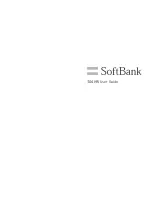
8
User Manual
Copyright ©2003 A7 Engineering, Inc.
eb500 Basics
The eb500 supports two main operating modes: command mode and data mode. Upon
power up the eb500 enters command mode and is ready to accept serial commands. The
factory default communication parameters are 9600 Baud, 8 Data Bits, 1 Stop Bit, No Parity,
and No Flow Control. The eb500 supports commands to modify the baud rate and flow
control settings.
Command Mode
In this mode there are a number of commands that can be sent to change the baud rate,
locate other devices that are in range, check the firmware version, etc. All commands are
sent using visible ASCII characters (123 is 3 bytes “123”). Upon the successful transmission
of a command, the ACK string will be returned. If there is a problem in the syntax of the
transmission a NAK string is returned. After either the ACK or NAK, a carriage-return <CR>
character is returned. When a prompt (<CR> followed by a ‘>’) is returned, it means that the
eb500 radio is in the idle state and is waiting for another command. White spaces do matter
and are used to separate argument parameters of the command and a carriage-return
<CR> (ASCII 13) is used to mark the end of the command.
Data Mode
Once the eb500 radio is connected to another Bluetooth device, the eb500 automatically
switches into data mode. All data transmitted while in this mode will be sent to the remote
device and, therefore, NO further commands can be sent until the eb500 radio is
disconnected or switched back to command mode by use of the mode control I/O line or the
Switch to Command Mode command.
The connection status line of the eb500 module can be monitored to determine if there is an
active connection. Additionally, whenever a connection is present, the Connection Status
LED (Figure 1) on the eb500 module will be on.









































